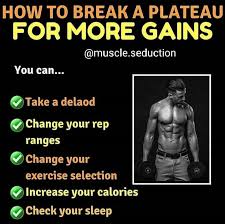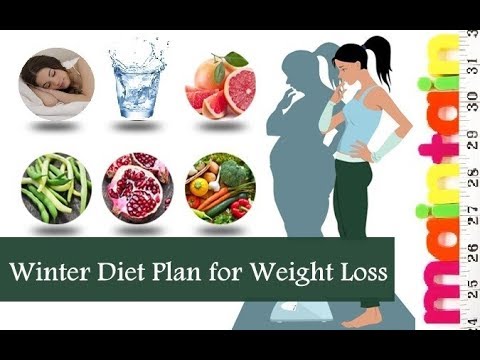
The best workout in the gym is the one that serves your specific needs and goals. Do not follow the example of another person's workouts. Every exercise and every method should be justified by its benefits for your goals. You shouldn't feel tired or unmotivated if it is. This is because the greatest workout is not necessarily the most complicated or the longest. Instead, it should be one that you find useful and helps you make meaningful progress.
Exercises that require only one direction of movement
Functional exercises include movement in multiple planes. These can be done with either free weights, or machines. They can help improve your body awareness, joint range and motion, as well as train your whole body. Some functional exercises involve using a medicine ball, a barbell, or dumbbells. To strengthen your core, you could also strap a sandbag to your shoulder.
Multi-muscle training is essential for the best gym workouts. You can build strength and muscle mass by using only three to four exercises. Since our bodies are designed to work together, it recruits numerous muscle groups at once, and it is easier to train different muscles at once when your workout is more varied. Your workouts should be varied to keep you motivated and to help you stick to your plan.

Exercises that increase heartbeat
Exercises that increase heart rate are ideal for burning fat and losing weight. 85 percent of calories are lost when the heart rate exceeds the resting rate. Slowly and moderately should be used for exercises that increase heart beat. Before starting any exercise program, you should consult a doctor if your heart condition is serious.
An increase in heart rate is good for keeping the heart healthy and strong. It can also lower blood pressure and decrease the risk of getting heart disease. It strengthens the muscles.
Exercises to increase metabolism
Strength training is one of most efficient exercises for increasing metabolism. Strength training works all major muscle groups and the core to burn calories faster than fat. Mountain climbers and other strength training exercises are included. They also help to build upper body muscle. You will also experience a faster heart rate. This means that oxygen-rich plasma reaches more parts of your body more quickly.
High intensity interval training (HIIT), a form of exercise that boosts metabolism, is another option. HIIT involves intense training followed by a longer recovery period. HIIT may be harder on your body than regular exercises, but it can give you a long-lasting burn. This is because your body needs to rest more after intense training.

Exercises to increase hormone levels
These results show that there are many types of high intensity exercise that can increase hormones. For example, testosterone, an important hormone for maintaining lean muscle mass, is increased in response to high-intensity training. This does not necessarily mean that all exercise increases testosterone. Avoiding too much exercise can lead to a loss of hormone balance and a decrease in your overall health.
During resistance training, there are many different kinds of hormones. These hormones are important in the body's ability to adapt to exercise. To increase protein synthesis and produce more muscle, the body uses testosterone. This is a great way to increase muscle growth. Low testosterone on the other side can hinder the body's ability to repair and adapt properly to exercise. It can also lead you to chronic fatigue.
FAQ
How can you lose weight?
People who are looking for a way to look good and lose weight are the top goals. The main reason why people want to lose weight is that they want to feel healthier and live longer. There are many different ways to lose weight. Some of them include cardio training, strength training, yoga, pilates, running, swimming, cycling, etc. Each type of exercise comes with its own set of benefits and drawbacks. Walking, for example, is the best way of burning calories. However, if you want to build muscle mass, then lifting weights would be the best choice. This article will explain how to lose fat and what exercise to do.
The first thing to consider when losing weight is what kind of diet plan you should follow. It doesn't mean you have to eat less, but it is important to avoid junk food and eat more fresh foods. It is recommended to consume at most 2200 calories per day. To lose weight quickly, you need to reduce your calorie intake. This will allow you to shed fat more quickly.
Start exercising if you want to quickly lose weight. Exercise is a great way to burn calories and increase your metabolism. It is important to combine exercise with healthy eating habits in order to effectively lose weight. Exercise can reduce your energy consumption, which means you won't be as able to eat as often. If you work out regularly, you will notice that your body starts burning fat faster than before. Regular exercise is a great way to keep fit and healthy. They help you stay active and prevent diseases such heart disease, diabetes, obesity, hypertension, among others.
You should walk as much as you can. Walking can help you burn approximately 500 calories an hour. A walk of 30 minutes per day can help you to burn approximately 1500 calories. This will result in a loss of 1 pound per week. You can also run/jog for 10 minute. Running burns approximately 1000 calories an hour. Running for 20 minutes should be done three times per week if you are trying to lose 5lbs in 3 weeks.
In conclusion, the best way to lose weight is to combine exercise with healthy eating habits. Balance these two aspects.
Can intermittent fasting interfere with my sleep?
Yes, intermittent fasting can impact your sleep. Your hunger hormones rise when you skip meals. As a result, you may find yourself waking up at night.
Experts recommend skipping breakfast. Instead, experts suggest eating a light snack just before bed.
If you're still hungry after this snack you can have a small meal right before going to sleep.
Be careful not to overeat. You'll gain weight, not lose it.
How long do I need to fast for weight loss?
It is not as easy as you think. When determining the number of days you should fast for optimal fat reduction, there are many factors to consider. These are:
-
Your age. Intermittent fasting can be difficult for young people (under 40). This is because they have less time to recover after each fast. If you are older than 60, you might find it difficult to maintain a prolonged period of daily fasting.
-
Your current body composition. You'll be most successful if you have lots of muscle mass. You may find shorter fasting more beneficial if your muscle mass is low.
-
How physically active are you. If you exercise regularly, you may need to extend your fasting window to ensure that you still get adequate rest between workouts.
-
Your health history. Extra fasting may be necessary for people who have heart disease, diabetes, cancer, or other medical conditions.
-
How do you handle stress? Stress can often lead to us eating more. You might need to lengthen your fasting windows in order not to have this problem.
-
It is the type of diet you are following. Certain diets, like ketogenic diets, may require even longer fasting periods.
-
The quality of sleep you receive. Insufficient sleep has been associated with decreased metabolism and increased appetite. It may take some trial and error before you find the right combination.
-
The amount of protein that you consume. Protein helps stabilize blood sugar levels, which means that eating more protein could potentially lead to lower insulin levels. This would allow you to fast for longer periods of time.
-
Whether you're trying to gain or lose weight, people who are trying to gain weight usually require longer fasting periods than those who are trying to lose weight.
-
What percentage of calories do you consume during your fasting window? Fasting for fewer calories per days may lead to greater fat loss than fasting with more calories.
-
Your overall fitness level. People who are fit and fast burn more calories per day.
-
Your gender. Men have greater appetites than women and may need to fast longer. Women have smaller appetites than men, so they may need to fast just 20-30 minutes each day.
-
Your lifestyle. Are you someone who does a lot of exercise? Are you able to exercise several times per week? Is your job a long, sedentary one? These factors can impact how fast you should be moving.
-
What amount do you spend on food each month? Not all healthy food means you need to spend a lot more on groceries. Whole grains are better than white bread and whole fruits are better than candy bars. Lean meats can also be saved.
-
How important it can be to control your appetite. You don't have to skip meals if you don’t want to.
What foods help me lose weight faster?
You can lose weight more quickly by eating fewer calories. There are two methods to accomplish this.
-
Reduce the number of calories you take in daily.
-
Through physical activity, you can increase the amount of calories that you burn.
It is easy to reduce calories. Everywhere you turn, there are many calorie-dense fast foods. Here's how to lose those extra pounds.
-
Beans contain high levels of fiber and protein. They are low in calories, so they're a good choice for people who want to lower their caloric intake.
-
Oatmeal is low on calories but high in nutrients, such as magnesium or potassium. It also has less sugar than most other cereals.
-
Eggs contain high levels of protein and cholesterol. Eating eggs at least twice a week can increase your metabolism, which helps you burn more calories.
-
Whole grain bread reduces hunger pangs. This can help you feel fuller and longer.
-
Dark chocolate is loaded with antioxidants and flavonoids, substances that have been linked to lower blood pressure and improved heart health.
-
Cottage cheese is rich in calcium which aids in bone strength. Cottage cheese also contains vitamin D, which can boost immunity.
-
Salmon is packed with omega-3 fatty acids, which promote brain development and improve cardiovascular function.
-
Green tea is chock-full with catechins. These compounds fight cancer and boost metabolism.
-
Broccoli is a great source of folic acid, which reduces homocysteine levels in the blood. Homocysteine high levels are associated with increased heart disease risk and stroke.
-
Yogurt is an excellent way to include probiotics in your diet without adding sugars. Probiotics are important for your digestive health.
-
Berries are a tasty snack that is also nutritious. All fruits, including blackberries, blueberries, raspberries, raspberries, cranberries and strawberries, are rich in vitamins and minerals.
-
Avocados are high in healthy fats. A half avocado has only 80 calories and offers plenty of filling fiber and potassium.
-
Nuts are delicious snacks that also provide a lot of protein. There are many great options for nuts, including cashews and hazelnuts as well as walnuts, pecans, hazelnuts and hazelnuts.
-
Sweet potatoes are another starchy root vegetable rich in beta carotene. It makes your skin shine. The orange variety is particularly beneficial because they contain higher amounts of beta carotene than regular sweet potatoes.
What Weight Loss Can You Expect In One Week?
The amount of weight that you can lose will depend on how high your body fat percentage is. To begin, you need to determine how much weight that you would like to lose. Next, find your BMI (Body Mass Index). Your BMI tells us how much weight you should lose in order to achieve this goal. If your BMI is 25 or greater, you're overweight. If your BMI falls below 30 you are considered obese.
For example, if you weigh 200 pounds, your BMI would be calculated at 28.7. To get to a healthy weight range, you'd need 70 pounds of weight loss. To see if you're overweight, visit www.healthyminds.com/bmi/.
This formula can be used to calculate how many pounds you will lose each week once you have determined your BMI.
(Your Goal Weight - Current Weight)/BMI * 7 Number Of Pounds Lost Per Week
To lose 50 pounds in a month, you would need to exercise for 2 weeks. That's 56 days divided by 7 pounds per day. This works out at 8.3 pounds per week.
You could also try this calculator from www.weightlosscalculator.net. It will provide an approximate amount of calories that you would need daily to lose one pound per month.
What level of exercise is required to lose weight?
The amount of exercise needed for weight loss depends on several factors, including age, gender, body type, and how much you weigh. However, the majority of people require at least 30 minutes of moderate exercise five days a week.
The American College of Sports Medicine recommends 150-minutes of moderately intense aerobic activity every week. It should be spread over three separate days.
You can lose 10 pounds by doing 300 minutes of moderate-intensity exercises each week, for example. This includes activities such swimming laps (brisk walking), biking, dancing and playing tennis.
If you're just starting out, consider doing 20 minutes of vigorous activity thrice weekly. It could be sprinting, lifting weights, jumping rope or fast walking.
Aerobic exercise is a great way to burn calories and build muscle mass. Muscle burns more calories per calorie than fat. So building muscle while losing weight may help you achieve your goal faster.
What is the best exercise for busy individuals?
Doing exercises at home is the best way to stay in shape. It doesn't take much to get fit. You don't need to spend a lot of money on expensive equipment to do basic exercises at home.
All you need is a pair dumbbells, mat, chair, and a timer.
You must be consistent with your training. You could lose motivation if your workouts are not consistent for more than a few consecutive days.
Try lifting weights three days per week. This is a great place to start. This could include squats, lunges, push-ups, pull-ups, dips, curls, etc.
Once you are proficient in these movements, you will be able to do other types of exercise, such as running, jumping, skipping and yoga, pilates, dancing, swimming, weight training and tennis.
Choose the one that fits your lifestyle. If you work long hours, you may want to avoid exercise programs that consume too much energy.
If you are a night owl, then you should consider exercising during the evening rather than early morning.
Remember to listen to your body and stop when you feel tired.
Statistics
- According to Harvard Health, it's estimated that a 155-pound (70-kg) person burns roughly 112 calories per 30 minutes of weight training (5). (healthline.com)
- One 6-month study showed that simply doing 11 minutes of strength-based exercises 3 times per week resulted in a 7.4% increase in metabolic rate, on average. (healthline.com)
- One study in 9 active men found that HIIT burned 25–30% more calories per minute than other types of exercises, including weight training, cycling, and running on a treadmill (18Trusted Source (healthline.com)
- Another study found that 24 weeks of weight training led to a 9% increase in metabolic rate among men, which equated to burning approximately 140 more calories per day. (healthline.com)
External Links
How To
How to Intermittent Fasting
Intermittent fasting refers to a diet where you only eat one day per semaine, typically Monday through Friday. The goal is to decrease your overall calories and still get adequate nutrition. This helps you lose fat more quickly than if it were your normal meals for the entire week.
The most popular form of IF is to limit calories to certain days. This would be a way to skip breakfast and eat whatever you want throughout the day. You could also choose three small meals instead of two large meals per day.
There are many forms of intermittent fasting. Each type of intermittent fasting has its pros and cons. Alternate-day fasting is the easiest method to get started because it doesn't require any significant lifestyle changes. Some people may find it difficult to adhere to such a strict schedule, so they might try other methods.
If you're looking to start an intermittent fasting routine, I recommend starting with alternate-day fasting. This will allow your lifestyle to be gradually altered while you transition into more extreme fasting.